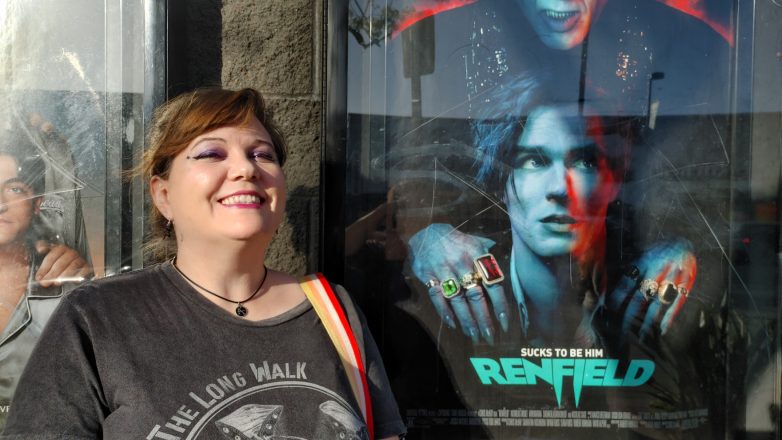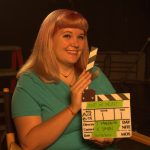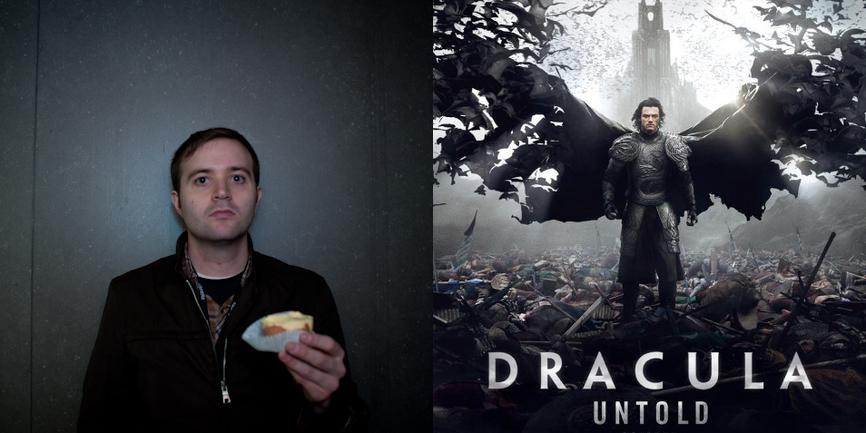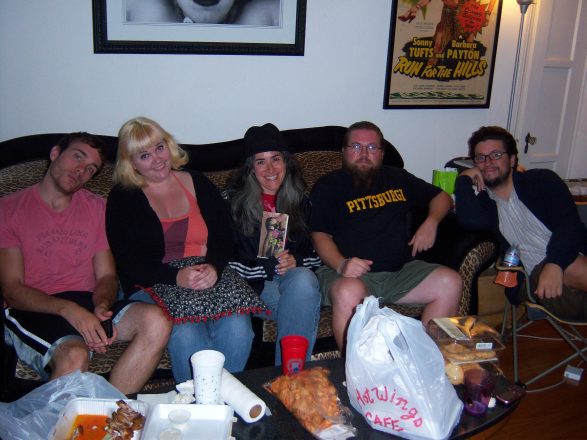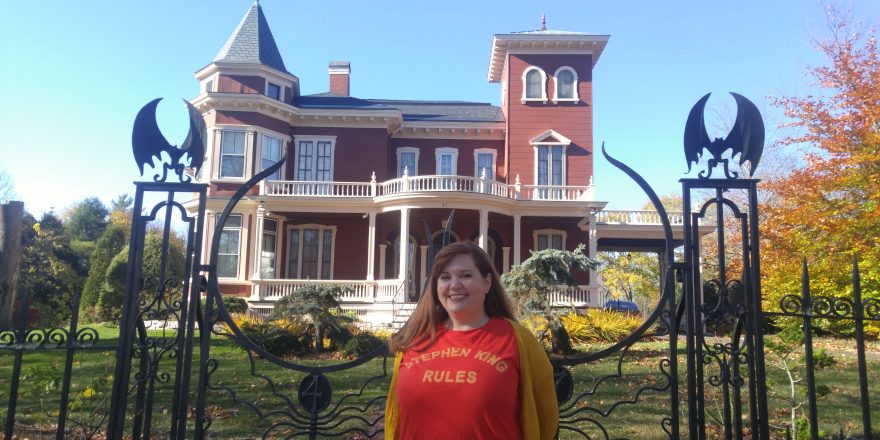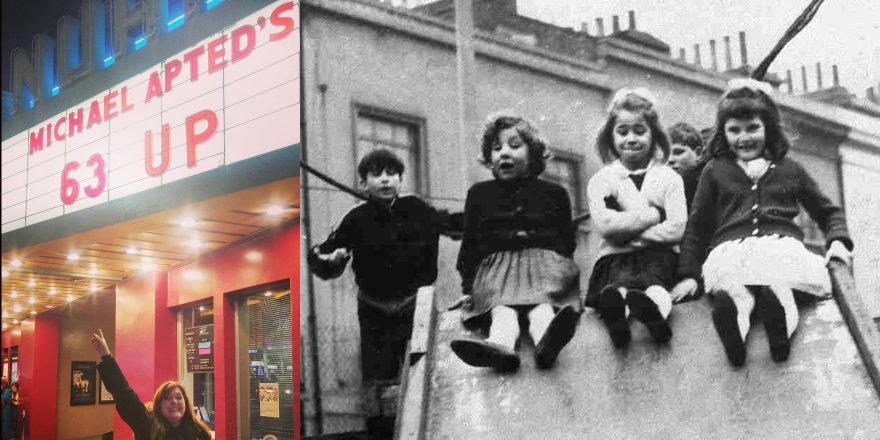My motto: every movie is better with a dance number.
Now, not every movie needs a dance number, but I think every film that has one is always greatly improved by it. Naturally, I’m a big lover of movie musicals, but I always like it when non-musicals slip one in – I was digging Ex Machina, then the dance number came in and I was ON BOARD. (500) Days of Summer, Ferris Bueller’s Day Off, Pulp Fiction and so many more films have a moment of musical delight that brings me joy.
So imagine my amazement when I found out that Chris McKay’s new film, Renfield, had a dance number – but only in short snippets in the credits, where we as an audience were tipped off that it had existed, but was excised from the film. The dancers were even credited! What had happened?
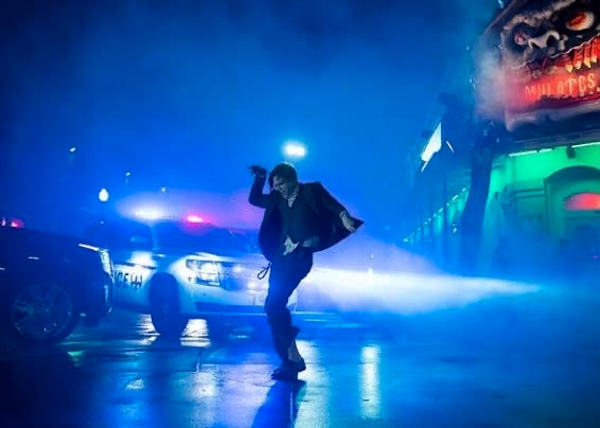
I took my two best friends and past/present Horror Movie Survival Guide co-hosts Marion Kerr and Teri Gamble with me to see it – they’re Renfield junkies just like me – so this movie felt made for us. We laughed and gasped all the way through. The black-and-white replication of the shot of crazed Renfield on the boat won me over so hard, because it was done so perfectly that I knew this film was made by people who had true love for the material and really wanted to please the fans. (I only wish there was more of the B&W footage – gorgeous!)
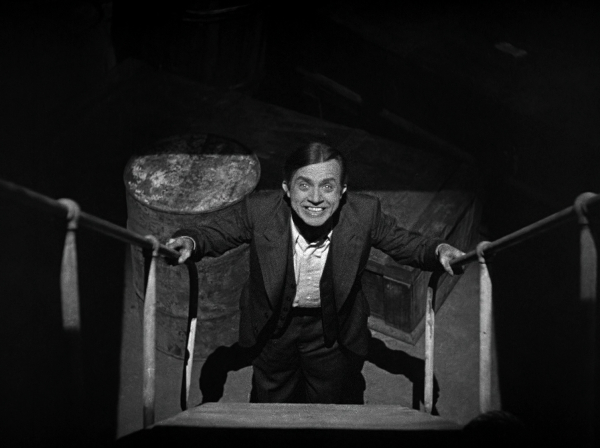
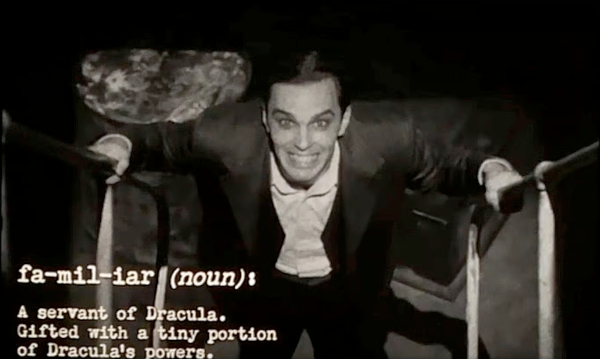
At the end of the film, we were apoplectic when we saw there was a deleted dance number, and vowed to find it online as soon as possible. When Marion, our sleuth, found it on Nicholas Hoult’s Twitter page, I was primed to dive into a deep dancing Renfield rabbit hole.
But let’s back up a bit.
Movies guided me to many books when I was younger – seeing the film versions of Huck Finn, The Secret Garden and Alive (yup!) made me want to read the source material and led me into further exploration of the characters. Seeing Coppola’s incredible Bram Stoker’s Dracula inspired me to read the novel, and I became fixated on the character of Renfield, a character who gets no inner monologue. We hear the thoughts of almost all the other protagonists in the book via diary, telegram, etc. But not Renfield’s point of view. What’s going on in his head?
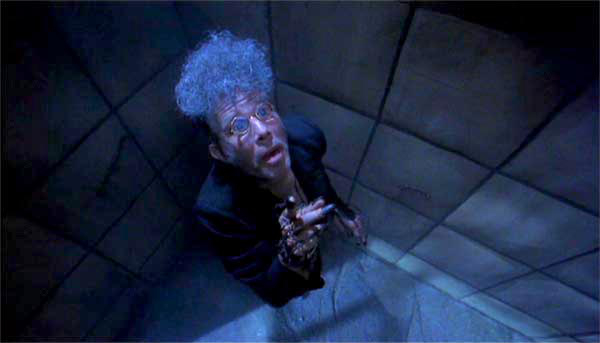
The tragedy of the incredibly loyal servant who is promised wonderful rewards by his master that he never receives is a trope we see in countless films. Dracula promises Renfield immortality for his service, but in movies he is most often betrayed or killed for his efforts – sometimes murdered for his fleeting moment of humanity. (Although he does live to spread plague throughout Europe in Herzog’s 1979 Nosferatu!)
So many non-Dracula vampire films focus on a plot about a vampire tiring of their old Renfield and looking for a new one – think Let the Right One In, Daughters of Darkness, The Hunger. So beyond the incredible amounts of performances on film of the actual character, we can also spread the (juicy fat) spider’s web a little further – look close enough and you’ll see “Renfield” in more films than you think.
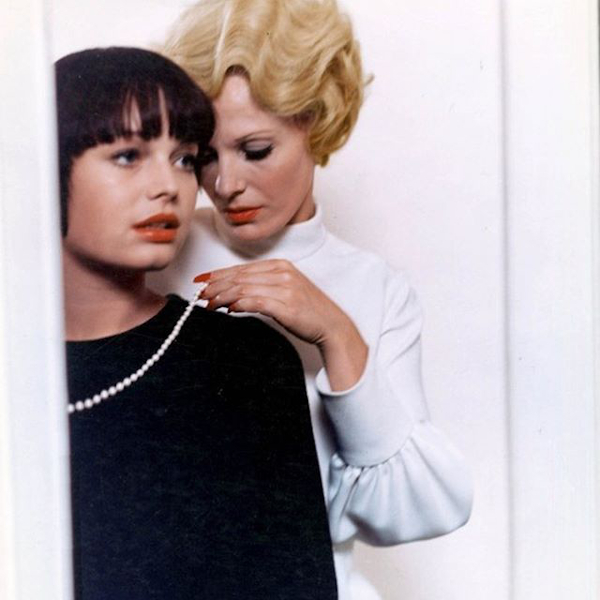
Needless to say, I had been waiting for Renfield to have his own movie for decades. I needed to dig deeper into his side of the story. When I heard one was being made, I was thrilled … and then a bit nervous. I had always pictured the film as a small character piece, really getting into the ins and outs of his life and conversations with Dracula – a vampire version of My Dinner with Andre, if you will. But the trailer looked a little silly, so I got nervous. I needn’t have worried.
Afford me a slight schoolgirl tangent – if you listen to my podcast, you know that my absolute horror downfall is the Cute Boy Killer. Norman Bates, Martin, Arnie Cunningham, Eric Binford – these characters bore into my soul for some reason, and I would be so incredibly toast, letting them lead me willingly to my death by their wrongly perceived sweetness. They’re tortured and strange, but so appealing. So believe me when I say that seeing Renfield portrayed as he is in this film was a direct arrow straight to my heart. Before his makeover, with his ’30s suit, his goth pallor, haunted eyes and Robert Smith hair? Count me in.
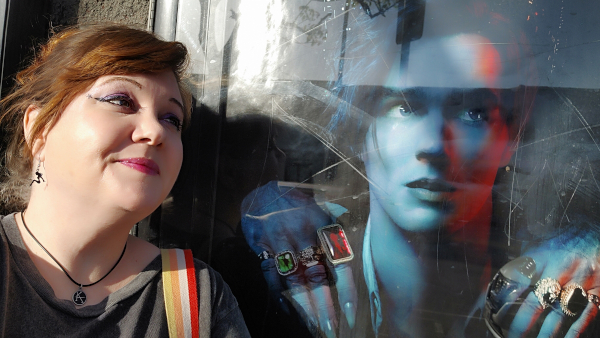
And, of course, once I ferreted out the deleted Renfield dance sequence, I was hooked, going down a rabbit hole of watching it on repeat. I’m not going to tell you how many times, and I’m not going to tell you what I had consumed and how much of it, but you can surmise that the answer to both is a lot. First I listened with the track used in the clip “(Your Love Keeps Lifting Me) Higher and Higher”, then switched to my (old school) iPod and watched the footage while listening to dozens of different songs, and it was fascinating.
Obviously, the tempo needed to be similar, and it wouldn’t line up perfectly for the whole number, but so many songs actually worked well – and sometimes hit specific moments on screen so perfectly, it was uncanny. The sequence takes on a different feeling when Young MC’s “Bust a Move” or Daft Punk’s “One More Time” is on top, but they both kinda work and they’re all just as fun. You can really play with the mood of a scene so much with just music.
What a fascinating thing film is!
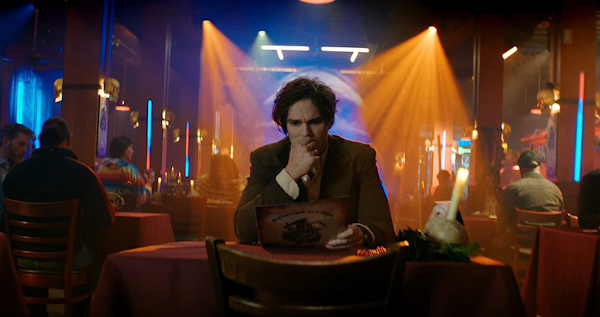
Often in movies, they’ll play a dance track while filming that they don’t use in the movie itself because of licensing rights or whatnot, so sometimes what you see on screen is not what they were actually dancing to on the day, but through the power of editing, you can make magic. I have no idea if this song is what they filmed to or if it was originally intended for this sequence or not (the added New Orleans style horns make me think maybe?), but this is certainly a fun film-related game to play next time you see a dance number – go all Pink Floyd/Wizard of Oz about it and be amazed at the coincidental line-ups of song and dance.
Nicholas Hoult (who has some moves!) and all of the dancers in the sequence worked on that choreography for weeks, costumes were made, the set was dressed. It’s a pretty big number, and is such a cute insight into the mind of the character at that moment in the film, and yet it didn’t make the cut. We, as filmgoers, never get the chance to really peek behind the curtain and see what actually happens when a film was being made, or the story of why certain sequences end up on the cutting room floor. But one can only hope we will get to see more of the dance number, the black-and-white footage and lots of extra Renfield goodness when the film is released on physical media. Until then, see it in the cinema or streaming at home.
Point being. Renfield is great. Would it be better with the dance number inserted? 100%.



